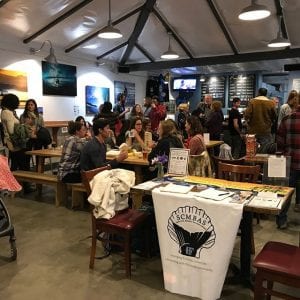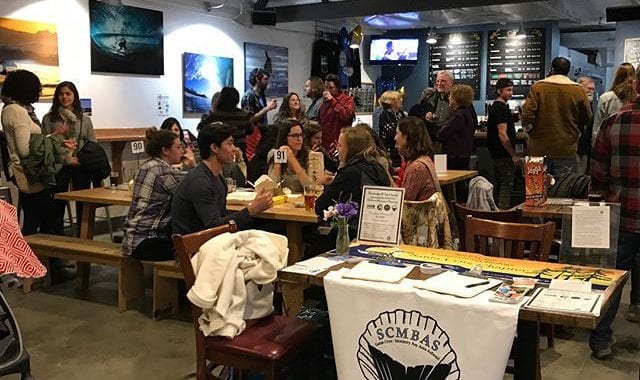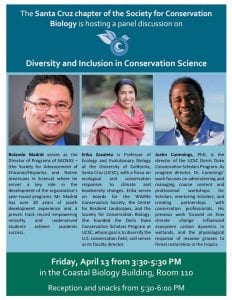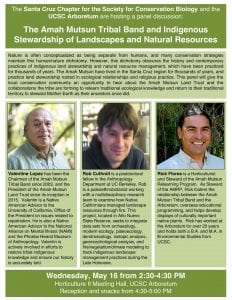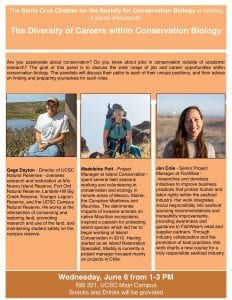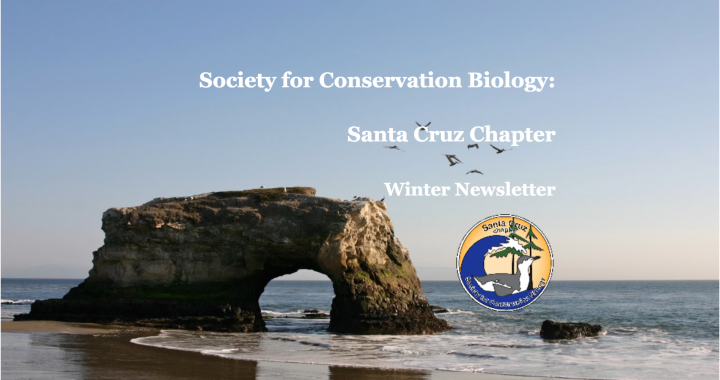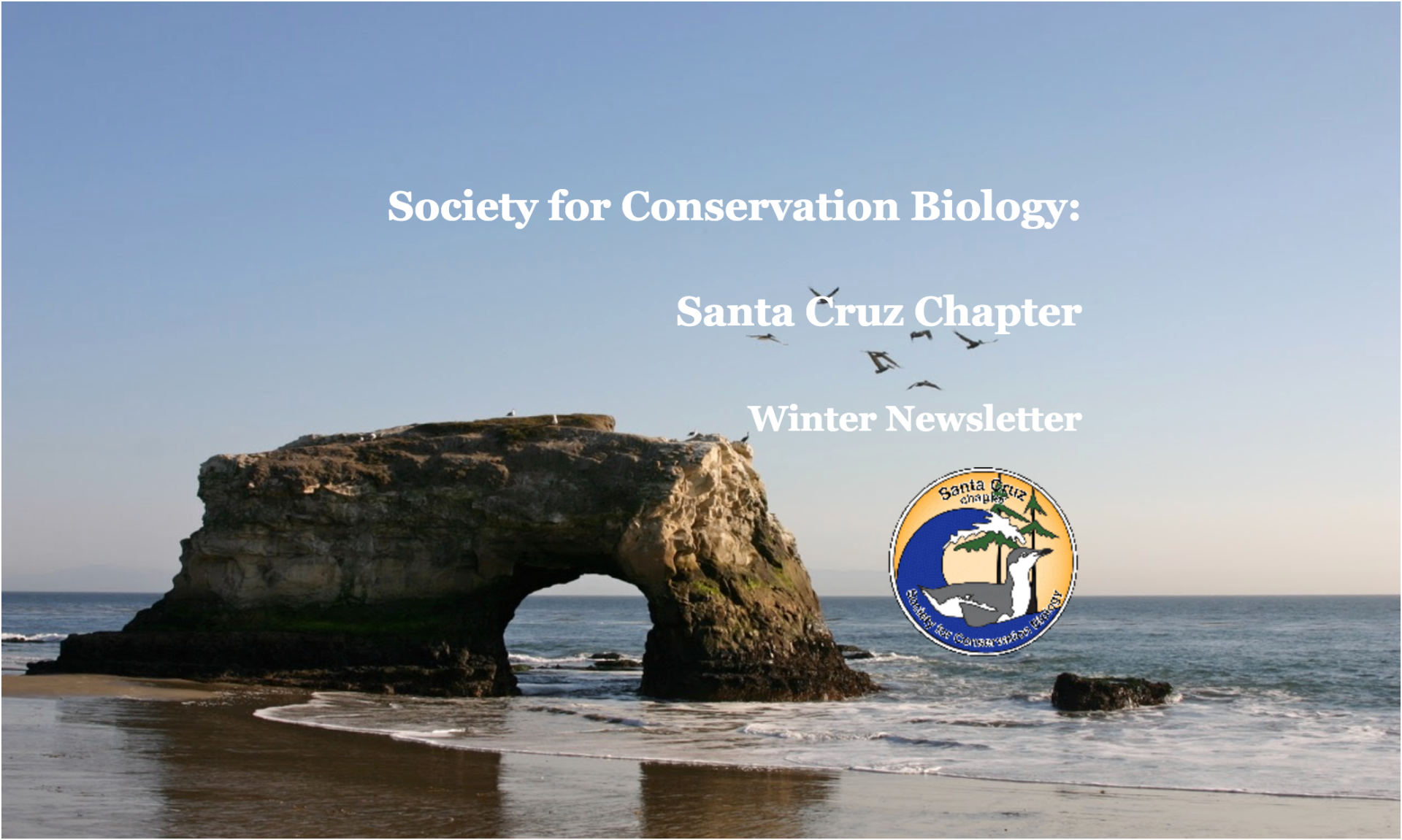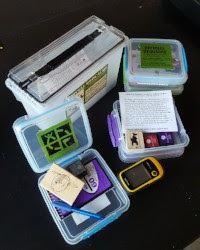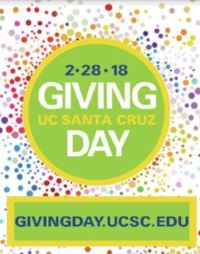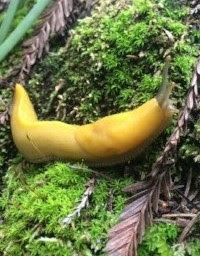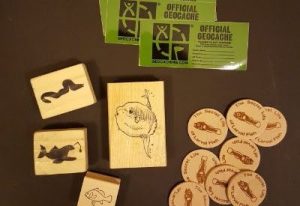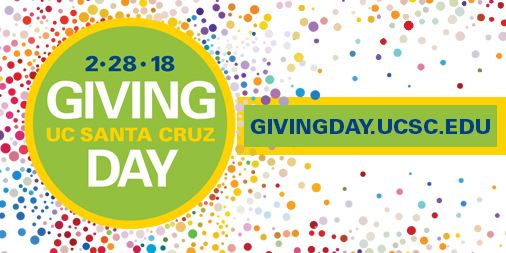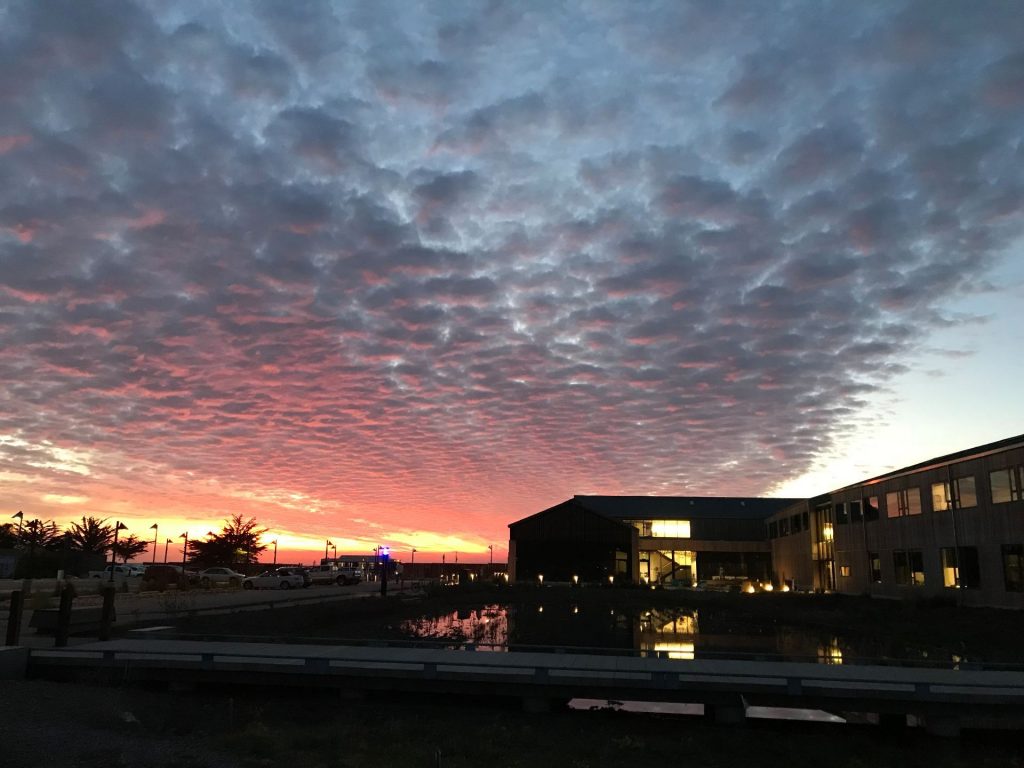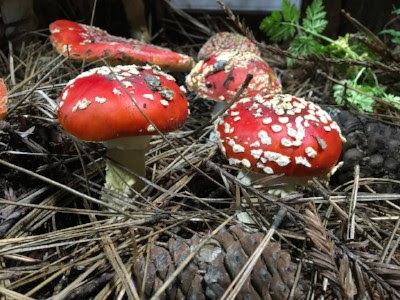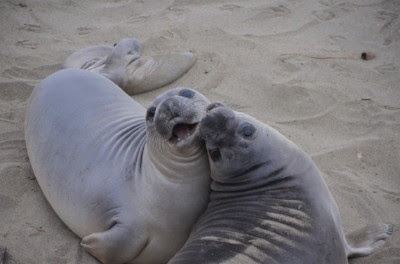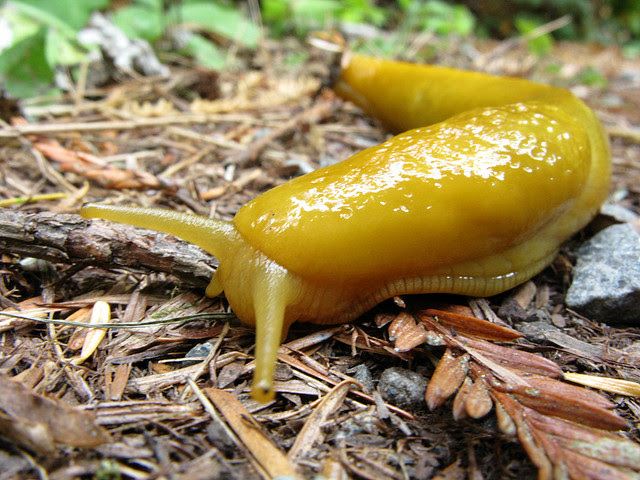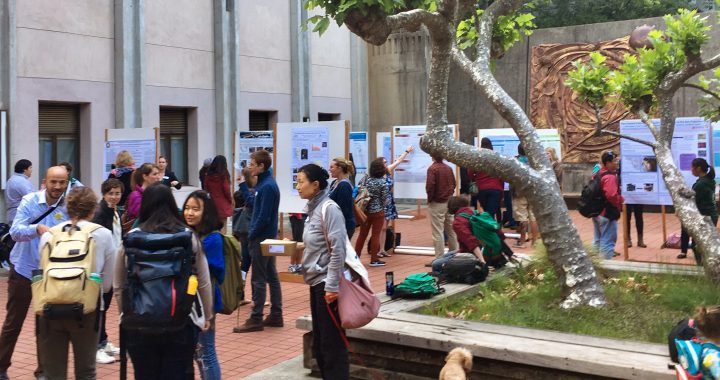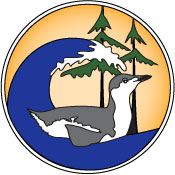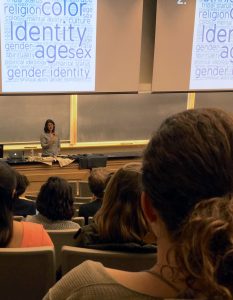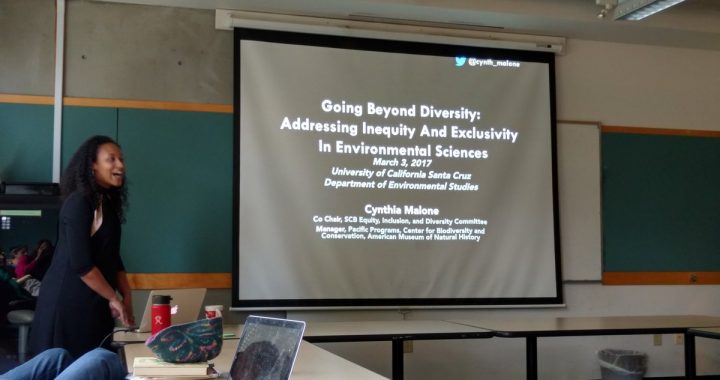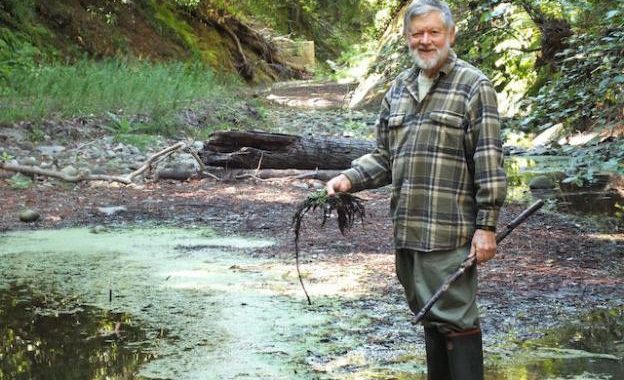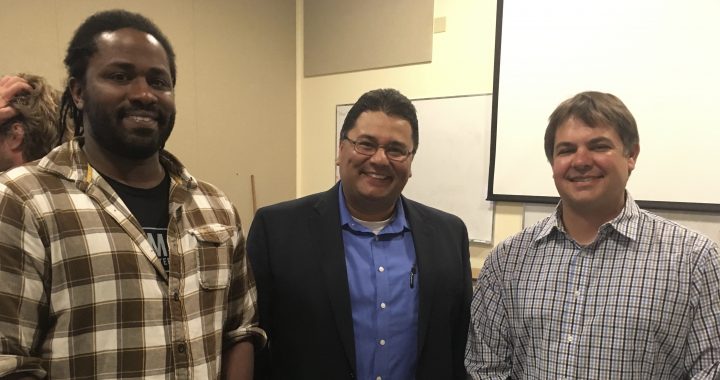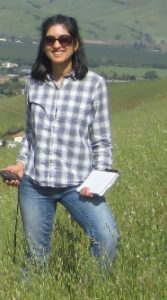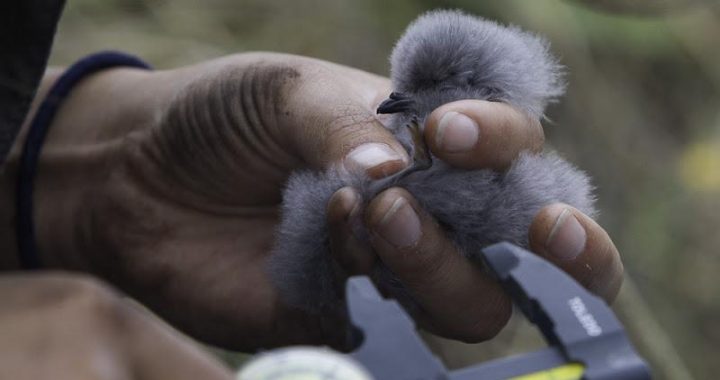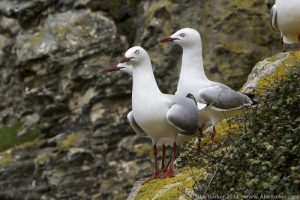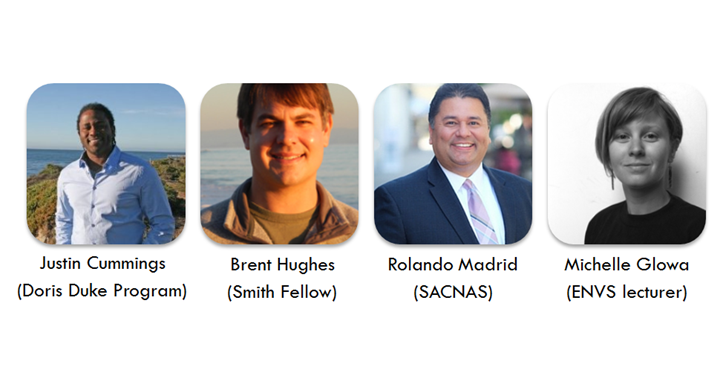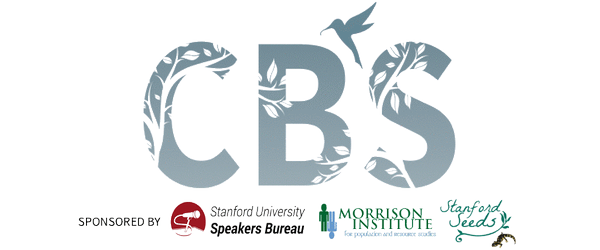Fred McPherson organizes the Santa Cruz Mountains Institute and is a Board Member with the Santa Cruz Mountains Bioregional Council. He wrote the following descriptions of both organizations and, after those, read his latest blog…which he issues regularly on solstices and equinoxes.
The The Santa Cruz Mountains Institute is a loose-nit group of past students from my classes about the Field Studies and Natural History of the Santa Cruz Mountains and the San Lorenzo River and other friends interested in the natural history and resource management issues of the Santa Cruz Mountains. I send out a little news letter and/ or announcements about what I am doing and things of interest now and then.
The idea of starting an Institute started when Paul Niebanks was chair or the Environmental Studies Department, or Board back in the 1980s We not only had Santa Cruz Mountains Field studies program back then that John Stanley and I were involved with, but Paul also had on going classes and seminars about resource management and planning going on during the school year that I was a part of. Any one interested in the natural history and resource management issues of the Santa Cruz Mountains can be a member and receive the e-mail newsletters and contribute by staying in touch with me by e-mail (fredwood@cruzio.com).
Santa Cruz Mountains Bioregional Institute
July 18, 2016
Summer Greetings!
Hotter Weather?
The summer solstice has come and gone and summer is officially here. We are starting to get back into our traditional pattern of alternating summer fog and hot spells, and the tan oaks are blooming, adding their characteristic fragrance to the summer air. This summer the hot spells seemed hotter, like the weather in the last days of June, and wetter and more drippy in the beginning foggy days of July.
The last days of June were in the high 90s F. here in the second-growth redwoods of Boulder Creek and over 100°F in town. Also for some reason, it has been one of our best thimble berry and hermit thrush years in decades.
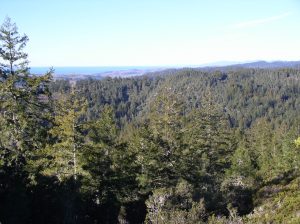
Most of you know the discouraging news that 2015 was the hottest year in recorded history and each month continuous to set records, with May being the hottest May in history and I just heard that June was also a rcord-breaking month. I still believe that global climate change does change everything and it remains the most urgent environmental challenge of our times.
I know that many of you are involved in this crucial issue and I welcome hearing about what you are doing.
In addition to the ongoing changes that I am making in my own lifestyle and home, I am still a member of the San Lorenzo Valley Water District (SLVWD) Environmental Committee and we are working on various ongoing water related environmental issues including how to reduce our carbon footprint further by generating more of our own electric power. In addition to possibly adding more efficient new solar panels, Director Gene Ratcliffe and the committee are investigating the possibility of small-scale hydroelectric energy generation. I also remain involved in the surface and groundwater politics of Santa Cruz County and the San Lorenzo River. Water and energy use are so interrelated.
In addition, I am working with what I consider to be effective national and international efforts to avert the consequences of climate change, like 350.org (divestment campaigns), Green Peace and the Bernie Sanders Movement. There is a very inspiring video about the world-wide “Break Free (from fossil fuels) events” that occurred last May. You can see it at the following link: https://youtu.be/sqHYDwCM0Yg
Fall Creek Watershed and Felton Supply Video
My wife, Roberta, and I are in the home stretch of finishing the Fall Creek video that we started in the Spring of 2015. We received an educational grant from the San Lorenzo Valley Water District to make a video about Fall Creek and where the community of Felton gets its water. As we have gotten into the project, more and more mysteries and information have serendipitously emerged. We knew that the community of Felton got its high quality cool water from Fall Creek at the intake pond just below the entrance to Fall Creek state park, but where does Fall Creek get its water?
In our Santa Cruz Mountains Bioregional class we have learned that Ben Lomond Mountain is one of the three main ridgeline geographic features of the Santa Cruz Mountains. Ben Lomond Mountain, along with the Butano Ridge and the Skyline Ridge, form the three main NW/ SW ridgeline axes of our Outer Central Coast mountain ridge. But what is special about Ben Lomond Mountain is its unique geological history. In the last few million years it has been uplifted and tilted to the southwest along the Ben Lomond fault, but its core is the igneous Salinian Block. It is believed to have had its origins in the Southern Sierra Nevada and has been broken off and brought up to the north along the western side of the San Andreas fault system. It brings with it a unique geological structure of igneous granite and quarts diorite as well as overlaying sedimentary and metamorphic rocks and Karst landscape materials that have a role in the formation of the Fall Creek watershed and its clear, cool waters.
A new report for the Santa Cruz City Water Department and the San Lorenzo Valley Water District has been released this last spring. It is called “Karst Protection Zone Investigation.” The purpose of the proposed study was to develop an inventory of karst-related rock formations in western Santa Cruz County as part of an overall effort to protect and manage ground and surface water resources in Santa Cruz County. It describes and further identifies the metamorphic lime rock (marble/ limestone) formations that sit atop the granitic quarts diorite and granite igneous formations at the core of the mountain. For more information about this interesting program you can go to the following URLs:
Karst Protection Investigation Zone Report
http://www.cityofsantacruz.com/home/showdocument?id=50746
Figures
http://www.cityofsantacruz.com/home/showdocument?id=50744
There is some additional good reference information about Karst topography and aquifers at:
Karst Primer: Geology and Hydrology by Jerry Webber
http://www.cityofsantacruz.com/home/showdocument?id=25314
Living with Karst: A Fragile Foundation
http://www.cityofsantacruz.com/home/showdocument?id=25366
We found it very exciting as well as challenging and time consuming to include this evolving geological information as well as resource management information about the Fall Creek fish ladder structures associated with the SLVWD intake in our video. The part that I enjoyed the most was shooting the video in the field in the different seasons and gaining access and insight into the watershed and confluence of Fall Creek with the San Lorenzo River. You might enjoy seeing the video about the Lady Bug migrations at Fall Creek that we witnessed last December. You can see it at our San Lorenzo Valley Back Yard You Tube channel at : https://youtu.be/BYuB62oOKlE
I’d like to thank institute members Bryce Winters, Jane Orbuch, Daniel Williford, and Frank Perry for their help on this project so far. Also thanks to David Grant from the SLV High School Aquaculture program, Dave and Annie Weise at the confluence, the SLVWD staff, and Drone pilots Dylan Arndt, Zoe Stumbaugh and Allan Lundell for their help.
There are legitimate concerns about the use of small drones from a personal privacy and wildlife/resource management point of view, but I have learned that there are many real potential useful roles that responsible drone use can play in natural history and resource management. The Santa Cruz Mountain Bioregional Council is investigating policies about their use.
We plan to have public showings of this video for the community and schools after it’s completed in late summer. Let me know if you have suggestions of where and how to share it. I will let you know about these events as plans develop.
On Going Community Hikes and Activities
In addition to the ongoing fun and adventures associated with my home, family and community life this last winter and spring, I have kept up my natural history hikes, classes, and activities for Carol Carson’s SLVWD Community Education Grant Watershed Walks, Henry Cowell State Park Docents training program, and the San Lorenzo Valley Museum. After nearly a decade of Carol’s Community Watershed walks, they are coming to an end due to lack of ongoing funding. I think they have played an important role in educating our San Lorenzo Valley community about the natural history and dynamics of the watershed. I hope that another way can be found to continue this important form of community environmental education. Thanks Carol, as you and Bucky walk off into the sunset, for all of your dedicated work over the years.
Santa Cruz Mountains Species Accounts Find New Home
Several years ago, I found a home for all of the Santa Cruz Mountains Natural History Species Accounts files that I had accumulated over the years. I donated them to the Henry Cowell State Park Docent Library. They contain most of the species account papers done in the Santa Cruz Mountains Field Studies/Natural History classes, and Ecology of the San Lorenzo River classes, as well as small papers, photographs and projects from other newsletters and local publications. They have been cleaned up, labeled, edited a bit, and inventoried by Henry Cowell Docent Michael Fineman. A digital catalogue list of them (arranged under my name, alphabetically by common name) is available on line at:
https://cloud.collectorz.com/HenryCowell/books/detail/3020600
( for plants)
and https://cloud.collectorz.com/HenryCowell/books/detail/3020553
(for animals).
They are in two file drawers labeled “Species Accounts Plants” and
“Species Acounts Animals” in the library and the instructions for using them are in the front of each door. There is a wealth of unpublished (grey liturature) information there and if you want to access it for your interpretive or research purposes, you can make arrangement with the acting interpretive naturalist.
New Publications
What’s Next for the Redwoods?
In the July-Sept. 2016 issue of Bay Nature there is a feature article written by Joan Hamilton about the bold new plan for the redwood forest of the 21st Century that is being forged in the Santa Cruz Mountains. It is a timely article that explains some of the issues involved with land acquisition, management, and conservation of the redwood forest in the Central Coast Range in this new economic era. For decades, the specter of redwood forest destruction and urbanization has stimulated donations to the conservation of redwood forests. But now, partly in response to economic austerity conditions, the land conservation organizations for redwoods, like the Sempervirens Fund can no longer purchase the redwood land they wish to conserve and simply turn it over to the State of California. They now are forced by economic restraints to hold these critical newly acquired properties and engage in their own version of redwood research and resource management. This article explains how the coalition of Sempervirens Fund, the Peninsula Open Space Trust(POST) and the Save the Redwoods League are attempting to collaborate to develop a management plan for the newly acquired 8,532-acre San Vicente watershed redwood forest lands. Lands are proposed to be divided into Restoration Reserve Forests, Working Forests (that will be thinned) and Preservation Reserves. How will these lands be managed? Check out this article.
Also in this issue there is a very sweet article entitled “Malcolm Margolin’s Beautiful Life,” well worth reading.
Hip History of Santa Cruz
|
New Book Published
Hip Santa Cruz: First-person accounts of the Hip Culture Movement
in Santa Cruz, California in the 1960s
Edited by Ralph Abraham
Epigraph Books, June 2016 |
This new book has just been published and is available in Bookshop Santa Cruz and on line. As many of you know, I have been a contributor and active member of this project for many years now.
Here is a short message from Ralph about the book and our ongoing efforts to collect stories, artwork, and other information about this exciting, critical period in the environmental, cultural and political history of Santa Cruz and the entire Santa Cruz Mountains area:
“Dear Hips,
The book based our old website has just been published:
http://www.ralph-abraham.org/books/hipsc/
There will be a book launch event on Saturday, August 6th. Mark your calendar!!! Saturday, August 6. If you would like to attend this event please send me an email (if you have not already) at:
abraham@vismath.org
and I will reply with more details as the date approaches.
Some contributors to “Hip Santa Cruz” will be on hand to discuss
their stories and answer questions. Holly Harman, author of the related book “Inside a Hippie Commune,” will also be on hand.
Signed copies of both books will be available. Also, a website of supplementary material is in preparation. And a facelift of our old website is also in the works thanks to Jacob Aman.
It has been 50 years since Leon opened the Barn!!!
Best wishes,
Ralph.”
I am including a little more information from the book below:
From the PREFACE
“In the 1960s, Santa Cruz was a fountainhead of Hip culture. When I arrived in 1968 to join the new university, UCSC, the creative time was nearly over. By 1980, it seemed to me it had been such a miracle that its birth should be recorded. So I created the Santa Cruz Hip History Project in 2002, collecting oral histories and photographs in a website. This book is a compact summary of the 14 years’ accumulation of material from that website that was most relevant to the creation of the Hip culture of Santa Cruz. From 1964 to 1970, we will follow the stories of some of the main characters of the Hip miracle in Santa Cruz.”
TABLE OF CONTENTS
PREFACE, vi
Part I. OVERVIEW, 1960s
- Pat Bisconti, 3
- Rick Gladstone, 23
Part II. 25TH CENTURY ENSEMBLE, Spring 1964
- Max Hartstein, 57
Part III. HIP POCKET BOOKSTORE, Fall 1964
- Peter Demma, 83
- Bob Hall, 100
Part IV. UC SANTA CRUZ, Fall 1965
- Fred McPherson, 115
- Paul Lee, 128
Part V. THE CATALYST, Spring 1966
- Judy Hill, 153
Part VI. THE BARN, Summer 1966
- Leon Tabory, 167
- Joe Lysowski, 182
Part VII. PACIFIC HIGH SCHOOL, Fall 1966
- Fred McPherson, 193
Part VIII. 724 CALIFORNIA STREET, Fall 1968
- Ralph Abraham, 205
- Rivkah Barmore, 209 CONCLUSION, 213
REFERENCES, 215
A CONCLUDING QUOTE FROM RALPH
“I began the Hip Santa Cruz History Project and website with the idea that the 1960s Hip Culture movement was a miracle. And even though it did not last, I still believe it was a miracle, and thus it proves that miracles (in the form of major cultural transformations) are possible. And thus, there may be some hope for our future on Planet Earth, despite all appearances to the contrary.”
Enjoy the Summer,
Fred
